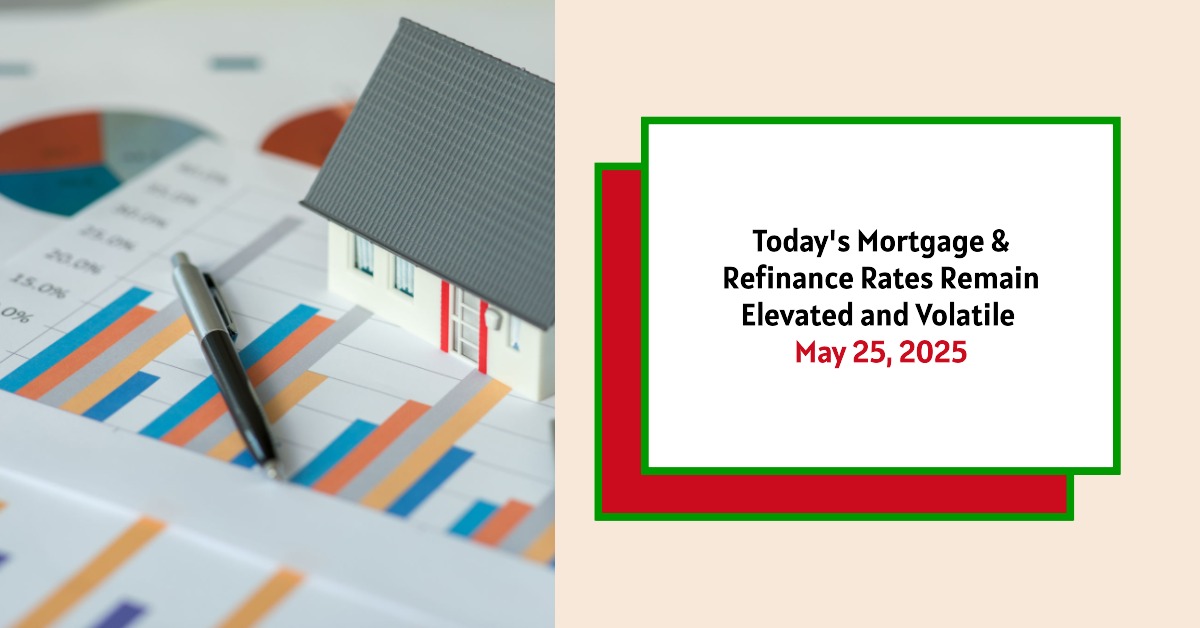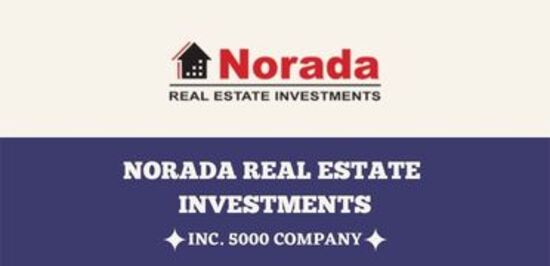Today's mortgage rates as of May 25, 2025, are just under 7%, a level that illustrates the ongoing strain in the housing market influenced by political and economic developments. Specifically, the projected impact of the GOP tax bill, expected to increase the federal deficit significantly, has geopolitical implications that weigh on investor sentiment and trigger higher mortgage rates. This current scenario leaves potential homeowners and those considering refinancing in a tight spot with respect to their financial choice.
Today's Mortgage & Refinance Rates – May 25, 2025: Rates Remain Elevated and Volatile
Key Takeaways
- Current Mortgage Rates are approaching 7%.
- 30-Year Fixed Mortgage Rate: 6.87%
- 15-Year Fixed Mortgage Rate: 6.13%
- Refinance Rates are comparable to purchase rates.
- Economic uncertainty stemming from political factors is a major influence.
Current Mortgage Rates Overview
As of May 25, 2025, here are the average mortgage rates by Zillow, broken down by type:
| Mortgage Type | Average Rate |
|---|---|
| 30-Year Fixed | 6.87% |
| 20-Year Fixed | 6.79% |
| 15-Year Fixed | 6.13% |
| 7/1 ARM | 6.95% |
| 5/1 ARM | 6.93% |
| 30-Year FHA | 5.95% |
| 30-Year VA | 6.47% |
The 30-year fixed mortgage remains the dominant choice among new home seekers largely due to its predictability. Homebuyers favor this option as it allows them to maintain a steady monthly repayment plan over a long period, making it easier to budget. However, choosing a longer term often results in a higher interest rate compared to shorter mortgage terms.
The 15-year fixed mortgage is particularly appealing for those looking to pay off their loan quicker and save money in additional interest costs over the life of the loan. The trade-off here is that the monthly payments are higher, but for many, the savings in interest outweigh this consideration.
Current Mortgage Refinance Rates
When it comes to refinancing, today's rates are strikingly similar, allowing potential refinancers to capitalize on low costs relative to fixed-rate purchases:
| Refinance Type | Average Rate |
|---|---|
| 30-Year Fixed Refinance | 6.84% |
| 20-Year Fixed Refinance | 6.81% |
| 15-Year Fixed Refinance | 6.08% |
| 7/1 ARM Refinance | 8.13% |
| 5/1 ARM Refinance | 7.29% |
| 30-Year FHA Refinance | 5.75% |
| 30-Year VA Refinance | 6.49% |
Source: Zillow
The similarity in refinance rates to purchase mortgage rates indicates that refinancing might be a valuable option for those looking to lower their monthly payments or modify their mortgage structure. Specifically, if interest rates fall significantly, homeowners could consider a refinance to take advantage of the cost reductions. This becomes important given the inherent uncertainties tied to the broader economy and legislative measures.
Key Factors Influencing Mortgage Rates
Several factors can impact mortgage rates, and understanding these helps explain the current financial landscape:
- Economic Conditions: The U.S. economy plays a crucial role in influencing the rates. As investors process the implications of fiscal actions, such as the GOP tax bill, perceptions shift about the long-term health of the economy. Higher deficits typically lead to higher Treasury yields, which often set the stage for increased mortgage rates. Consequently, potential homeowners need to remain vigilant about these political and economic discussions that could drastically alter their borrowing costs.
- Investor Sentiment: When investors are jittery due to economic or political turmoil, they become more risk-averse, leading to fluctuations in rates. The perception of higher risk will lead to greater returns being demanded by investors in bonds and mortgage-backed securities, which in turn influences rates. The ongoing issue of national debt and its management contributes directly to cost of borrowing for consumers.
- Credit Profiles: Individual credit scores remain a crucial consideration for determining interest rates. Those with higher scores typically receive lower rates as they are viewed as less risky by lenders. Conversely, those with lower credit may find themselves facing steeper prices for their loans. Borrowers are encouraged to maintain a healthy credit profile by reducing debt and improving payment histories, especially in an environment characterized by elevated rates.
- Supply and Demand: The current real estate market is packed with challenges, as a shortage of housing supply maintains upward pressure on prices. High demand, coupled with low supply, means that many prospective buyers are still looking to secure mortgages, despite the rising rates. This dynamic is expected to keep rates elevated in the near term, as lenders anticipate continued competition in a tight housing market.
- Federal Reserve Actions: One major influence on mortgage rates is the Federal Reserve's monetary policy. Recent Fed rate hikes have been enacted to combat inflation, creating a scenario where long-term mortgage rates are expected to rise as well. Although mortgage rates do not move in direct correlation to the federal funds rate, they often rise in anticipation of the Fed's moves and their potential impact on the economic landscape.
Read More:
Mortgage Rates Trends as of May 24, 2025
Dave Ramsey Predicts Mortgage Rates Will Probably Drop Soon in 2025
What Lies Ahead for Mortgage Rates?
Looking ahead, there are a few potential trends on the horizon for mortgage rates. While experts believe rates may slightly decline later this year, various factors could influence the exact trajectory.
Fannie Mae has forecasted that mortgage rates might end 2025 at approximately 6.1% and further decrease to around 5.8% in 2026, mainly due to anticipated adjustments in economic conditions. However, there's uncertainty, too, as ongoing discussions around tariffs and global economics could alter inflation patterns, impacting rates sharply.
If a recession were to occur, rates could drop more significantly; on the flip side, if inflation persists due to external pressures, we may see even higher rates.
On a more localized level, it’s vital to highlight that home prices may not experience significant drops, primarily because of the persistent demand in the market. Home prices increased under similar conditions in prior years, and despite speculation about a cooling market, their expectations are now moderated—risking further strain in available housing stock. While Fannie Mae anticipates price growth could slow to about 4.1% in 2025, the existing inventory challenges will likely hinder drastic price alterations.
Understanding Mortgage Types and Their Distinctions
There are various types of mortgages available to homebuyers, and selecting the right one can mean the difference between financial comfort and frustration.
- Fixed-rate Mortgages: Fixed-rate mortgages provide stability, securing the interest rate for the entire loan term. This predictability allows borrowers to budget effectively and protect themselves against rising rates. However, these loans typically come with higher rates relative to adjustable-rate options.
- Adjustable-rate Mortgages (ARMs): ARMs often start with lower rates for an initial fixed period (e.g., five or seven years), after which the rate adjusts periodically based on market conditions. This option can be advantageous for buyers who plan to move before the adjustment period begins, but the potential for rising payments later on necessitates careful consideration.
- Government-Backed Mortgages: Government-funded loans like FHA, VA, and USDA loans offer specific advantages, typically catering to lower- and middle-income buyers. With lower rates and down payment requirements, this option can be attractive for first-time buyers who may not have substantial savings.
Finally, when assessing both mortgage and refinance rates, it’s essential to consider not just the rates themselves, but also the broader financial context, including personal circumstances, housing market conditions, and economic indicators.
Conclusion
In summary, today's mortgage rates stand close to 7%, informed by various economic and political factors that shape the current real estate landscape. Prospective homebuyers should enter the market informed and consider how the intricate tapestry of economic trends affects their financial goals.
Invest Smarter in a High-Rate Environment
With mortgage rates remaining elevated this year, it's more important than ever to focus on cash-flowing investment properties in strong rental markets.
Norada helps investors like you identify turnkey real estate deals that deliver predictable returns—even when borrowing costs are high.
HOT NEW LISTINGS JUST ADDED!
Connect with a Norada investment counselor today (No Obligation):
(800) 611-3060
Also Read:
- Will Mortgage Rates Go Down in 2025: Morgan Stanley's Forecast
- Expect High Mortgage Rates Until 2026: Fannie Mae's 2-Year Forecast
- Mortgage Rate Predictions 2025 from 4 Leading Housing Experts
- Mortgage Rates Forecast for the Next 3 Years: 2025 to 2027
- 30-Year Mortgage Rate Forecast for the Next 5 Years
- 15-Year Mortgage Rate Forecast for the Next 5 Years
- Why Are Mortgage Rates Going Up in 2025: Will Rates Drop?
- Why Are Mortgage Rates So High and Predictions for 2025
- Will Mortgage Rates Ever Be 3% Again in the Future?
- Mortgage Rates Predictions for Next 2 Years
- Mortgage Rate Predictions for Next 5 Years
- Mortgage Rate Predictions: Why 2% and 3% Rates are Out of Reach
- How Lower Mortgage Rates Can Save You Thousands?
- How to Get a Low Mortgage Interest Rate?
- Will Mortgage Rates Ever Be 4% Again?


